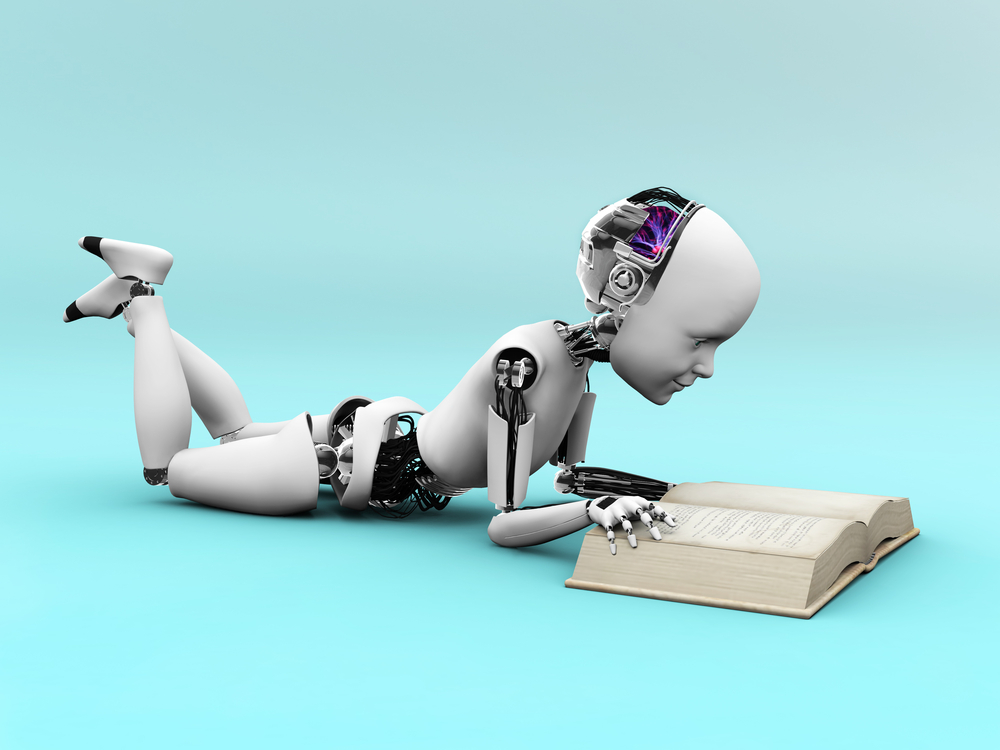Artificial intelligence is being used all around is, but it looks nothing like The Jetsons. So why are people panicked that robots will take their jobs?
The World Economic Forum warned that robots and technological advances will take more than 5 million jobs from humans over the next five years.
Machine learning has undoubtedly earned its place in the workforce, but machines don’t necessarily have to replace humans – they can in fact enhance the work humans can do.
One area where machine learning is flourishing is in the localisation and translation industry. Digital content is exploding as is the number of languages companies want to communicate with their customers in.
Increased global competition necessitates faster time-to-market, which leads to increased pressure for companies to push out content fast. And lots of it.
The numbers speak for themselves: 32% of millennial consumers in English-speaking countries prefer to be communicated with in a language other than English and 46% are more likely to purchase from a brand if information is presented in their preferred language – making it even more essential for companies to communicate with audiences across various languages.
Translation needs to keep up, but not all content needs to be translated by humans and that is why the industry has looked beyond human translation to meet these growing demands.
Technology-enabled language services drive efficiency in the speed and cost of translation, whilst maintaining consistency and quality. Translation memory allows for the reuse of previously translated content and machine translation is becoming an increasingly viable option in areas where language is repetitive, predictable or well structured.
Machine translation is also a cost effective solution for the translation of user-generated content such as social media, blogs, community forums and chat, which would previously not have been cost-effective to translate.
Machines have their limits
While machine learning can help increase output, some consumers of translated content are becoming more demanding in requiring local language versions of content to not only be translated accurately, but also to retain the same nuance and sentiment as language and cultural barriers are crossed.
Languages have hundreds of nuances and are constantly changing. Slang comes and goes and machines need to be told when words are being used in a context that isn’t the norm.
So while the language industry will continue to adopt machine translation, human jobs are not at risk. In fact, the Bureau of Labor Statistics projects 29% employment growth for human interpreters and translators by 2024.
Humans are needed for a number of tasks that machines will never be able to do, such as post-editing, cultural adaption of marketing messages, and transcreation (delivering high quality cultural adaptation of messages from one language to another while maintaining intent, style, tone and context).
When companies do high-quality translation, they use machine translation for a first draft and then a human translator for post-editing, where they refine the end result. Slang and sentiment can’t be understood by machines without a human stepping in to “teach” the machine.
Translation blunders often happen when content is translated out of context. This is why transcreation is a necessary piece of the puzzle. The transcreation approach is a process where parts of messages are translated but other parts are adapted for the target market.
This is vital when translating content for global companies where a sentence in one country could mean something completely different in another country. In order for this to work, a human is needed to evaluate the context of the content based on location, audience and various other demographics. No machine is capable of that.
However, as humans make corrections, the machine translation engine learns these preferences so that it doesn’t make the same error twice. So human translators actually play a large role in machine learning.
Human-machine partnership
This trend of human-machine partnerships is by no means unique to the language industry. In the world of advertising, programmatic doesn’t just use machine learning; it relies on it.
Machine learning-driven decisions help advertisers optimise spend and save companies millions of dollars.
Machines are used to analyse data to optimise target audiences and determine the most appropriate advertising spend. However, humans are still needed to oversee these tools in order to optimise campaigns in real-time.
Another area the advertising industry uses machine learning for is ad fraud and ad bots. Machines can’t always identify malicious behavior on their own. Humans are needed to set up additional technology to identify these types of issues, or there needs to be employees monitoring for these types of threats.
>See also: 4 industries that will be transformed by machine learning in 2018
The big data industry also uses machine-human partnerships. Business intelligence companies use machines to sort and analyse data quickly, but humans are necessary for ensuring the machines ask the right questions to gain the insights businesses need. A lot of data without a gut feeling can result in a fumble. Even the most sophisticated algorithm needs a human to guide it in the right direction.
We will continue to see the rise of intelligent machines across industries, but they’re not taking over our job market. It’s evident that the best results come from human-machine collaboration and businesses will continue to realise this as the results become more and more tangible.
So don’t worry about being replaced by robots just yet. After all, machines are built by humans.
Sourced from Dominic Kinnon, president, global language solutions, SDL







